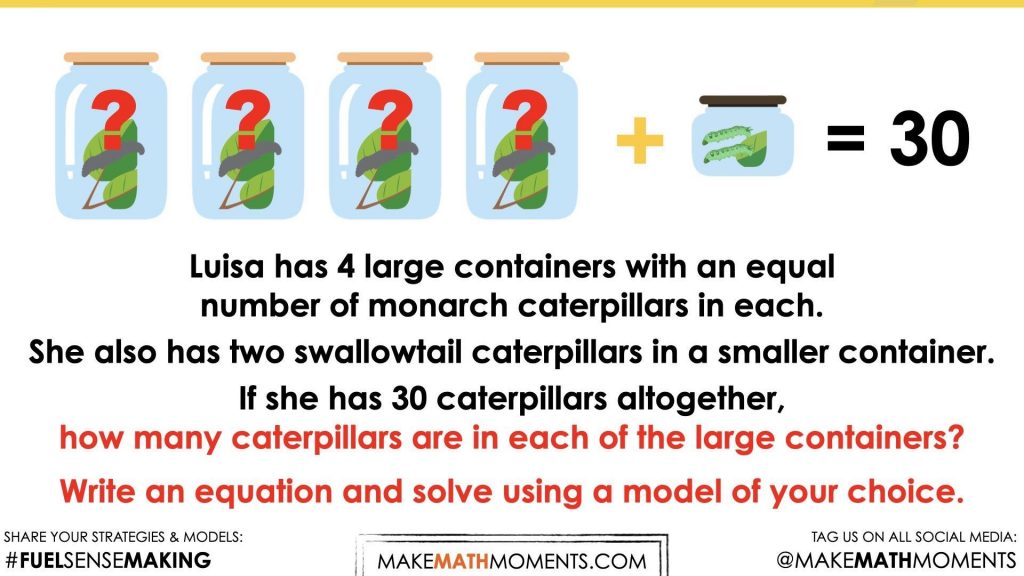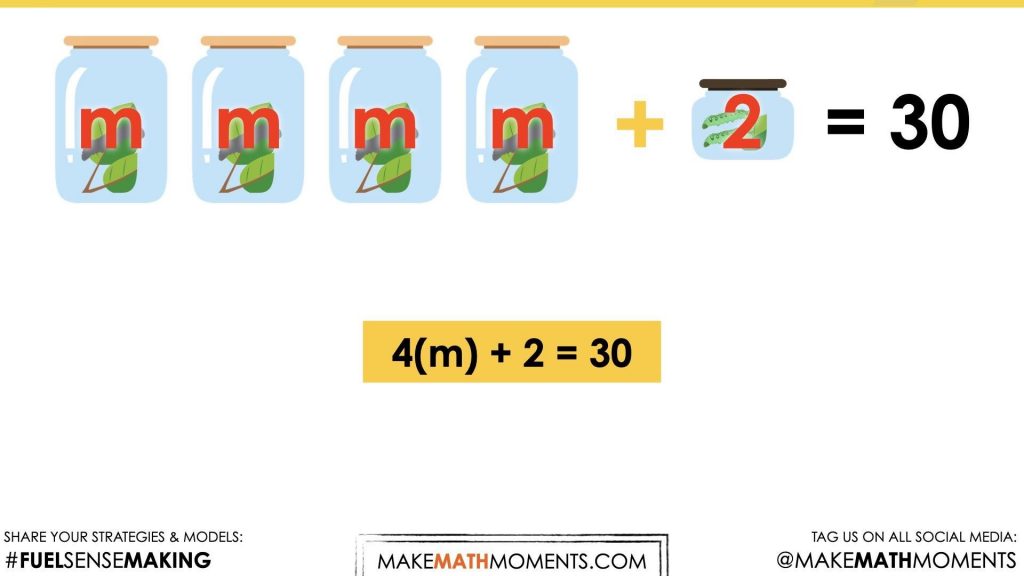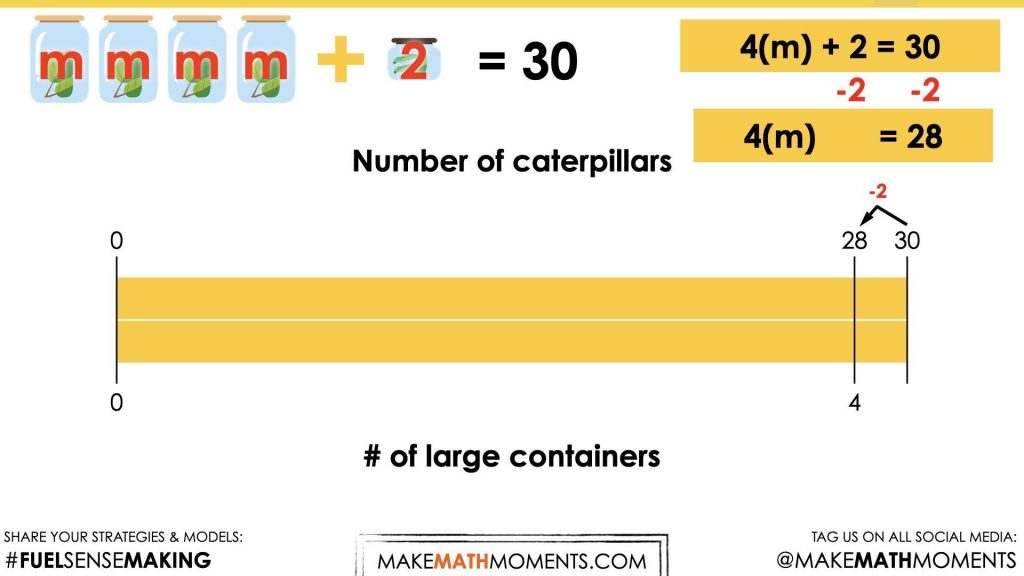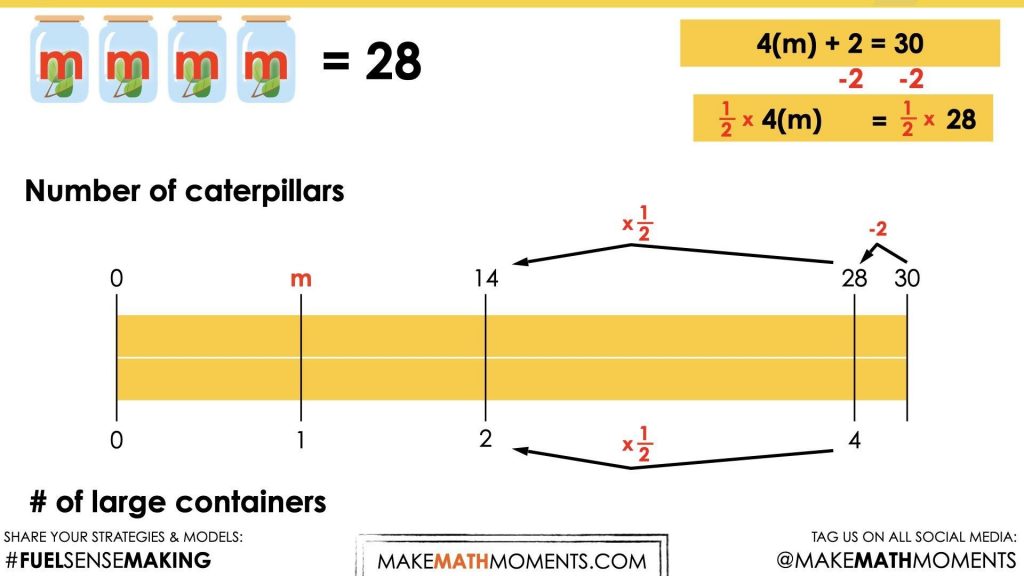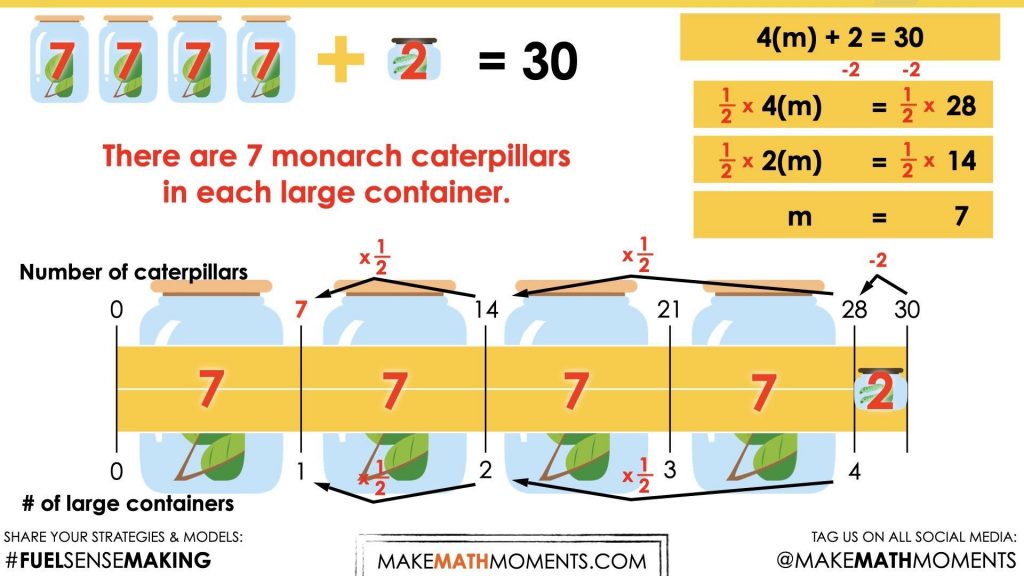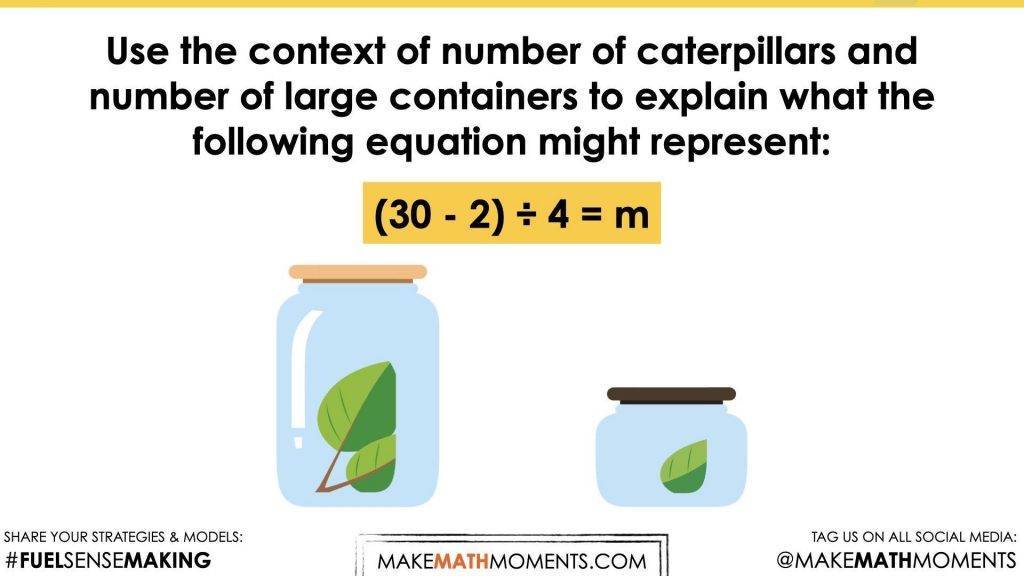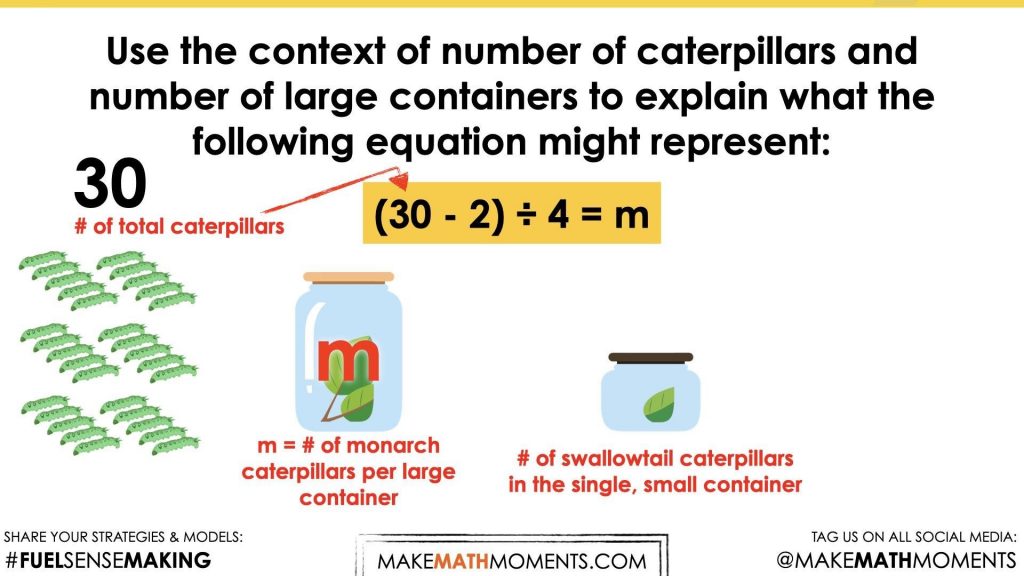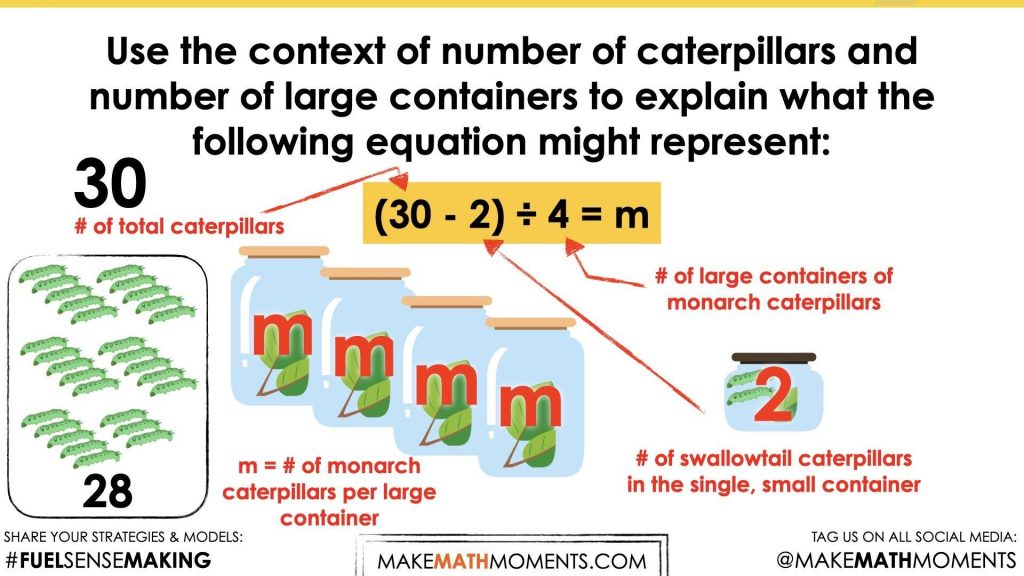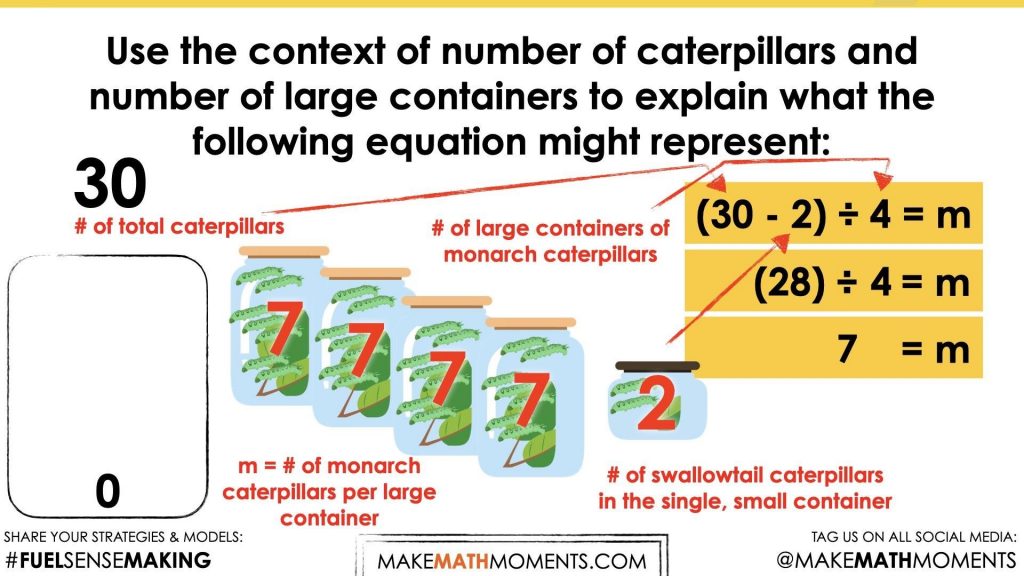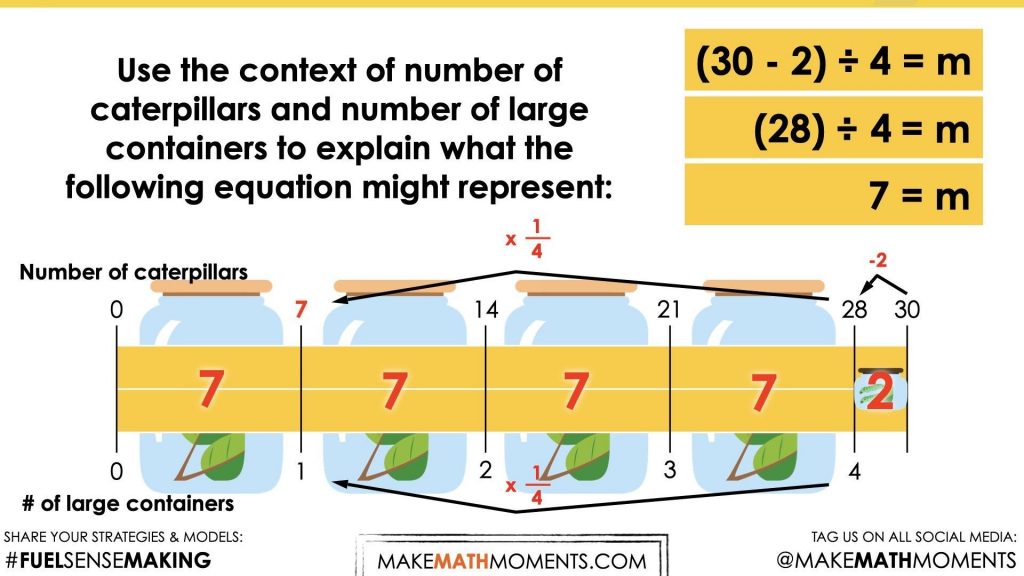PLANTING FLOWERS REVISITED [DAY 4]
TWO-STEP ALGEBRAIC EQUATIONS
Dive into this Unit of problem based 3 Act Math Talk lessons focused on contextualizing and solving two-step algebraic equations.
Intentionality
Math Talk
Visual Math Talk Prompt #1
Visual Math Talk Prompt #2
Visual Math Talk Prompt #3
Visual Math Talk Prompt #4
Visual Math Talk Prompt #5
Visual Math Talk Prompt #6
Purposeful Practice
Resources & Downloads
Educator Discussion Area
Intentionality & Unit Overview
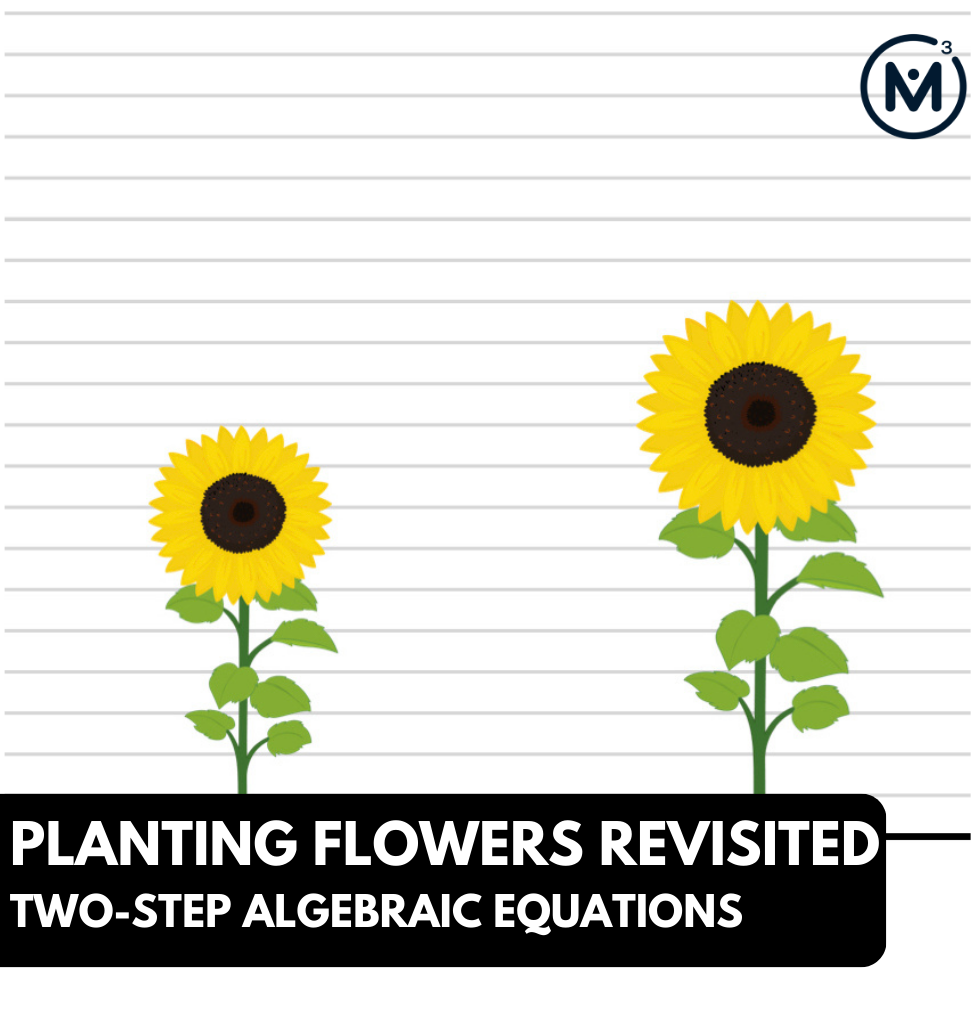
Length of Unit: 5 Days
Access each lesson from this unit using the navigation links below
Students will explore modelling and solving two-step algebraic equations involving multiplication.
Intentionality…
The purpose of the Day 4 activities is to reinforce key concepts from the first 3 days of this unit. Students will engage in a string of related problems through a math talk and will have an opportunity to complete independent purposeful practice. The math talk and purposeful practice serve to develop a deeper understanding of the following big ideas.
- There are two types of division.
- Partitive division is when the total quota is known (the dividend), and the number of parts or groups (the divisor) is known.
- Partitive division reveals a rate.
- In partitive division, the dividend and the divisor often have different units;
The dividend from any division sentence can be decomposed into smaller parts to allow for friendlier division by the divisor. This strategy is known as partial quotients. (i.e.: 85 ÷ 5 = 45 ÷ 5 + 40 ÷ 5 = 9 + 8 = 17);
Division is the inverse operation of multiplication;
Addition is the inverse operation of addition;
Variables are used to represent changing or unknown quantities;
When solving an equation where the coefficient of the unknown variable is not equal to 1, division is required to determine the value of the unknown variable and the context of the problem determines which type of division is required.
A two-step equation is an algebraic equation that takes you two steps to solve.
Math Talk
Present the following equations one at a time. Encourage students to describe a context that could be represented by each. All of today’s equations and contexts should be partitive. Meaning, the number of groups (parts) is known, the rate is unknown.
For example:
Luisa has 4 large containers with an equal number of monarch caterpillars in each. She also has two swallowtail caterpillars in a smaller container. If she has 30 caterpillars altogether, how many caterpillars are in each of the large containers?
Write an equation and solve using a model of your choice.
Students should use a model of their choice to solve and/or represent their thinking.
4(m) + 2 = 30
(30 – 2) ÷ 4 = m
Login/Join to access the entire Teacher Guide, downloadable slide decks and printable handouts for this lesson and all problem based units.
Although you could lead this math talk by orally sharing the context and representing student thinking on a chalkboard/whiteboard, consider leveraging the following visual math talk prompt videos to ensure accessibility for all students. We would recommend that you still model student thinking to ensure student voice is honoured prior to sharing the visual silent solution shared in the visual prompt video.
Visual Math Talk Prompt #1
Show the next visual math talk prompt and be ready to pause the video once prompted:
Show the following visual math talk prompt and be ready to pause the video once prompted:
In the video, students are presented with visuals and a text prompt to set the context involving an equal quantity of caterpillars stored in large containers plus an additional two caterpillars in a smaller container.
You’ll notice that this first prompt attempts to make this context very visual and scaffolds students toward an algebraic equation that could be used to represent this situation, 4m + 2 = 30.
It is worth noting that this context is going to require the use of partitive division as the unknown variable represents the rate of caterpillars per large container while the number of large containers is known.
Some students might immediately begin using trial and error to determine the value of m. For example, some students might try m = 5 and will skip count to 20 (or multiply 4 large containers by 5 caterpillars) plus 2 caterpillars is 22. Therefore, they might adjust up until they land on the value of m that will result in a total of 30 caterpillars.
Other students might leverage a linear model like a stacked bar model beginning with 30 caterpillars and working backwards to reveal how many caterpillars must be in the 4 large containers. By subtracting the two additional caterpillars, students will quickly realize that there must be 28 caterpillars divided equally across the 4 large containers.
Now that the 2 additional caterpillars have been removed from the equation, we now have a simple one step equation involving partitive division to solve. Some students might choose to scale down by halving twice, or other students might immediately partition the quantity into 4 groups representing the 4 large containers.
Ensure that students are able to connect how multiplying by 1 fourth (or by 1 half and again by 1 half) is equivalent to dividing by 4. This idea can be helpful for students to solidify their understanding of how dividing by a quantity is equivalent to multiplying by the reciprocal.
Facilitator Note:
Be sure to ask students about what they notice when they analyze the equation 4(m) + 2 = 30 and the operations they used to solve for the unknown number of caterpillars per large container, m. Some students may be able to recognize that we are using opposite operations to undo or work backwards to find the value of m. Ensure this is explicitly highlighted.
Visual Math Talk Prompt #2
Show the next visual math talk prompt and be ready to pause the video once prompted:
In this visual math talk prompt, we are encouraging students to start with an equation and attempt to craft a scenario using the same context.
Some students may quickly realize that this equation is equivalent to the equation from the first visual math talk prompt and we can now highlight the use of opposite operations leveraged in the previous prompt (subtracting 2 caterpillars and then dividing by 4 large containers).
Encourage students to articulate what each of the quantities in this equation could represent in this scenario.
In the visual math talk prompt video, you’ll see the 30 caterpillars being partitioned by subtracting 2 caterpillars to be stored in the single small container and the remaining 28 caterpillars fair shared (divided partitively) across 4 large containers.
We can also leverage our stacked bar model from the previous prompt to show how this equivalent equation can be solved for m by performing the same operations.
Visual Math Talk Prompt #3
Login/Join to access the entire Teacher Guide, downloadable slide decks and printable handouts for this lesson and all problem based units.
Visual Math Talk Prompt #4
Login/Join to access the entire Teacher Guide, downloadable slide decks and printable handouts for this lesson and all problem based units.
Visual Math Talk Prompt #5
Login/Join to access the entire Teacher Guide, downloadable slide decks and printable handouts for this lesson and all problem based units.
Visual Math Talk Prompt #6
Login/Join to access the entire Teacher Guide, downloadable slide decks and printable handouts for this lesson and all problem based units.
Purposeful Practice
While Students Are Practicing…
Login/Join to access the entire Teacher Guide, downloadable slide decks and printable handouts for this lesson and all problem based units.
Questions: Two-Step Algebraic Equations
Login/Join to access the entire Teacher Guide, downloadable slide decks and printable handouts for this lesson and all problem based units.
Resources & Downloads
Login/Join to access the entire Teacher Guide, downloadable slide decks and printable handouts for this lesson and all problem based units.
Printable Lesson Plan PDF
Videos, Images & Media Files
Apple Keynote Presentation
Powerpoint Presentation
Printable Consolidation Prompts
Educator Discussion Area
Login/Join to access the entire Teacher Guide, downloadable slide decks and printable handouts for this lesson and all problem based units.
Explore Our 60+ Problem Based Units
This Make Math Moments Lesson was designed to spark curiosity for a multi-day unit of study with built in purposeful practice, number talks and extensions to elicit and emerge strategies and mathematical models.
Dig into our other units of study and view by concept continuum, grade or topic!


